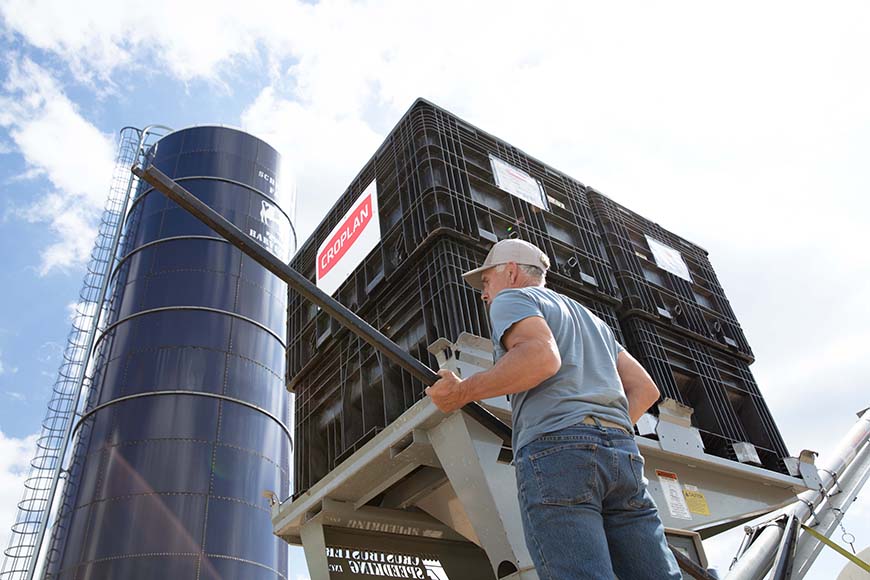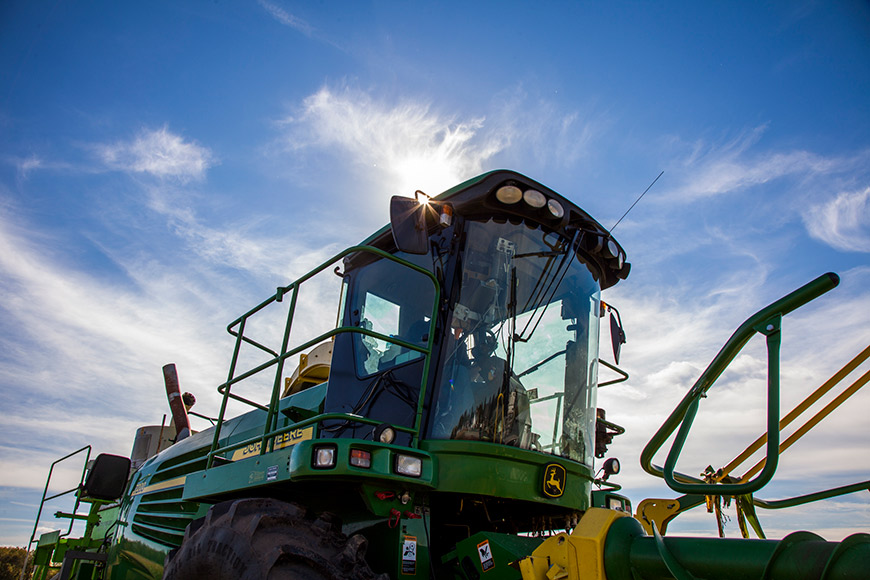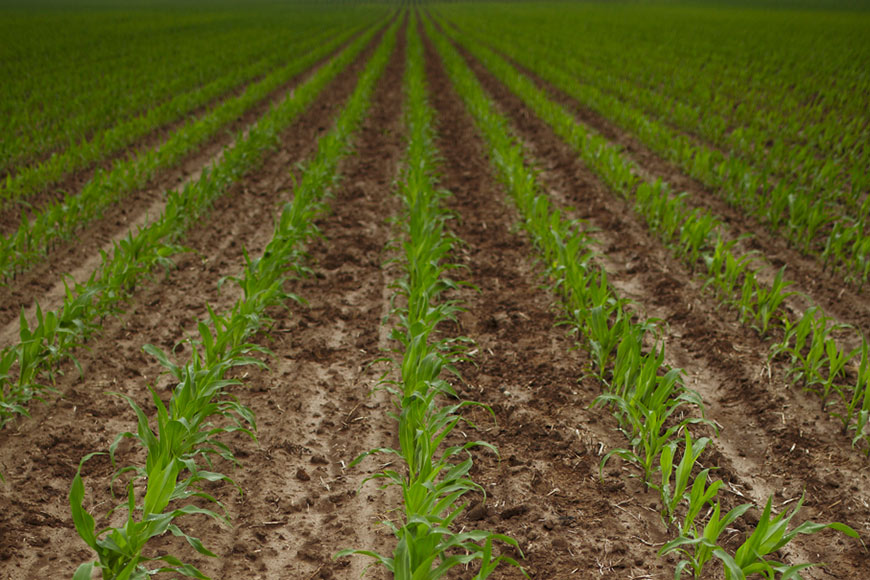Push Crops Through Stressful Conditions With Biostimulants

During the lifespan of a crop, it’s faced with numerous stressors that can chip away at yield. So what can you do to protect plants from stress? It starts with keeping crops healthy from day one with good management practices.
Stay ahead of the season
Start by anticipating potential problems based on current crop conditions and the weather forecast. Scout crops frequently and use technology like the R7® Field Monitoring Tool to track growth stage and crop development. Take tissue samples ahead of key nutrient uptake periods to allow yourself time to make in-season fertilizer adjustments if necessary.
Biostimulants can help
In addition to traditional fertilizers, biostimulant additives can give crops an extra boost, especially during stressful conditions. Biostimulants are biologically derived products that can trigger reactions in a plant ranging from stress alleviation to yield enhancement.
Voyagro™ biostimulant fertilizer by WinField United works well on highly managed corn acres where there is moisture stress prior to application or where moisture stress is anticipated. A foliar application from V4 to V8 in corn is recommended when fertility is adequate and available moisture is low. Answer Plot® research indicates that in areas that had less than 2 inches of rain immediately following a Voyagro application, there was a positive return on investment 93 percent of the time. The average yield response of a Voyagro application under these conditions was 3.8 bushels per acre.*
Toggle® is another biostimulant fertilizer used in corn, soybeans, cotton and other crops. It’s derived from seaweed and enhances root growth, promotes synthesis of antioxidants and improves photosynthesis by increasing chlorophyll production in plants. Toggle works best on acres where stress is known to occur, such as areas where drought and high temperatures are likely or in saline or sodic soils. A foliar application around V5 and again at flowering can offer stress protection in corn.
Biostimulants promote plant growth and work best when applied with traditional fertilizer products. Work with your agronomist to develop a fertilization program that works harder to protect your crops during times of stress.
We’re here to help you with your holistic plant nutrition plan. Next, we’ll explore how to mitigate in-season stress using plant growth regulators and how to pair plant nutrition and seed choices, as well as tips for soil testing. We’ll continue to dig into all aspects of plant nutrition throughout the year right here on the Growing Knowledge blog, so be sure to check back for more plant health tips.
*2015 Answer Plot data, 27 locations across IA, KS, MN, MT, ND, NE, SD, TX
Stay ahead of the season
Start by anticipating potential problems based on current crop conditions and the weather forecast. Scout crops frequently and use technology like the R7® Field Monitoring Tool to track growth stage and crop development. Take tissue samples ahead of key nutrient uptake periods to allow yourself time to make in-season fertilizer adjustments if necessary.
Biostimulants can help
In addition to traditional fertilizers, biostimulant additives can give crops an extra boost, especially during stressful conditions. Biostimulants are biologically derived products that can trigger reactions in a plant ranging from stress alleviation to yield enhancement.
Voyagro™ biostimulant fertilizer by WinField United works well on highly managed corn acres where there is moisture stress prior to application or where moisture stress is anticipated. A foliar application from V4 to V8 in corn is recommended when fertility is adequate and available moisture is low. Answer Plot® research indicates that in areas that had less than 2 inches of rain immediately following a Voyagro application, there was a positive return on investment 93 percent of the time. The average yield response of a Voyagro application under these conditions was 3.8 bushels per acre.*
Toggle® is another biostimulant fertilizer used in corn, soybeans, cotton and other crops. It’s derived from seaweed and enhances root growth, promotes synthesis of antioxidants and improves photosynthesis by increasing chlorophyll production in plants. Toggle works best on acres where stress is known to occur, such as areas where drought and high temperatures are likely or in saline or sodic soils. A foliar application around V5 and again at flowering can offer stress protection in corn.
Biostimulants promote plant growth and work best when applied with traditional fertilizer products. Work with your agronomist to develop a fertilization program that works harder to protect your crops during times of stress.
We’re here to help you with your holistic plant nutrition plan. Next, we’ll explore how to mitigate in-season stress using plant growth regulators and how to pair plant nutrition and seed choices, as well as tips for soil testing. We’ll continue to dig into all aspects of plant nutrition throughout the year right here on the Growing Knowledge blog, so be sure to check back for more plant health tips.
*2015 Answer Plot data, 27 locations across IA, KS, MN, MT, ND, NE, SD, TX




